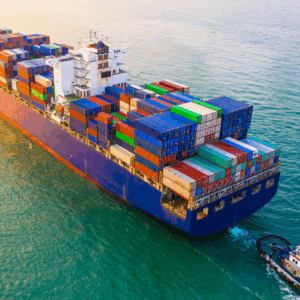
The 2025 Trucking Recession: Roots, Consequences, and Systemic Risk
The current recession within the trucking industry is not merely a cyclical event, but a structural correction that has been in the making for a long time. As outlined in the enhanced economic analysis titled “The Economic Fallout,” the convergence of aggressive tariff policies, inflationary pressures, and weakening industrial output has triggered a systemic contraction in freight demand. While initial signals suggested market resilience, deeper indicators, such as declining consumer spending and collapsing freight rates, revealed underlying vulnerabilities. The trucking sector, historically viewed as a variable in logistics systems, has now become a bottleneck, exposing the fragility of just-in-time models and highlighting excessive dependence on overland transport.
This recession has been characterized by sharp reductions in TL (Truckload) volumes, closures of small- to mid-sized carriers, and widespread driver turnover. Compounded by high insurance premiums, tightening labor markets, and increasing regulatory constraints, the trucking sector is struggling to maintain the service levels required by modern supply chains. As turnover among drivers reaches critical thresholds and newer generations turn away from long-haul careers, the long-term viability of domestic overland freight remains uncertain.
LTL Freight in Supply Chain Optimization: Adaptation Through Consolidation
In response to the volatility of the TL segment, LTL freight has emerged as a strategic alternative. Its inherent flexibility, allowing for the consolidation of smaller loads across multiple shippers, makes it ideal for high-frequency, low-volume distribution common in e-commerce, pharmaceuticals, and advanced manufacturing. According to industry whitepapers, implementing best practices in LTL transport involves building strong carrier relationships, standardizing packaging protocols, and investing in shipment visibility tools. These steps enable firms to reduce operational waste and increase lane utilization, thereby achieving efficiency in supply chain operations.
Furthermore, the multi-stage LTL systems described by Gonzalez-Feliu in the study of transport strategies provide a nuanced model where bundling, route optimization, and cross-docking reduce inefficiencies caused by fragmented deliveries. When applied to urban centers or dispersed distribution networks, these models help balance inventory placement and mitigate risks associated with final-mile bottlenecks. In contrast to point-to-point TL models, LTL systems offer scalability and dynamic re-routing that aligns with the growing need for agile logistics.
Another advantage is the compatibility of LTL freight with data-driven logistics management systems. Technologies such as TMS (Transportation Management Systems), route planning software, and warehouse-integrated APIs enhance the visibility, control, and cost-efficiency of LTL operations. By leveraging real-time data and digital booking platforms like ExFreight’s, shippers gain access to transparent pricing, automatic accessorial flagging (such as “sort and segment”), and performance analytics, core to logistics network resilience in turbulent markets.
Air and Ocean Logistics: Expanding the Global Freight Backbone
With land-based transport under pressure, air and ocean logistics are absorbing a significant share of long-distance, international, and time-sensitive freight. The rapid expansion of global e-commerce and the complexity of sourcing strategies demand logistics models that go beyond traditional shipping corridors. Reports from IATA and the International Air Transport Association (IATA) show air cargo volumes surging due to cross-border retail and pharmaceutical logistics. As capacity constraints in ocean shipping persist, air freight is becoming the default option for high-value goods, where speed, rather than cost, is the deciding factor.
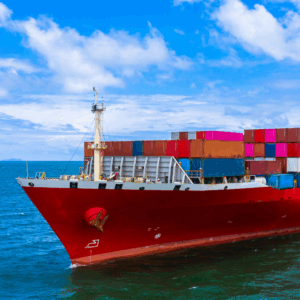
Ocean logistics, while less agile, remain crucial for bulk and commodity flows, especially within FCL (Full Container Load) and LCL (Less-than-Container Load) systems. However, the challenge lies in managing destination terminal fees, customs documentation, and last-mile port delivery, particularly in DOOR TO PORT shipments. Transparent freight quoting tools help mitigate surprises by including these costs upfront or flagging them for consignee responsibility. With geopolitical disruptions and trade policy shifts looming over key sea lanes, resilience in maritime logistics depends on route diversification, digital bills of lading, and enhanced port partnerships.
The Role of Airline Transportation in Modern Logistics Infrastructure
Airline transportation has historically played a supporting role in freight, but the situation in 2025 reveals a growing integration with end-to-end logistics networks. As detailed in comparative studies of transportation modes, the agility of air freight is unmatched for global value chains that prioritize speed, such as those in the electronics, perishables, and life sciences sectors. Airlines are now retooling fleets and cargo handling facilities to accommodate this shift.
Notably, the development trajectory of air transport logistics has seen major inflection points. From its military origins to modern-day smart airports, air cargo has been reshaped by factors such as global oil pricing, aviation regulations, and digital transformation. Airlines now incorporate AI tools for route planning, predictive maintenance, and carbon tracking, making them key players in the decarbonization of freight systems. This shift aligns with sustainability frameworks, such as CORSIA and Net-Zero commitments, by embedding air logistics into sustainable supply chain management strategies.
Labor Dynamics and the Human Factor in Freight Logistics
A logistics system is only as strong as its workforce. One of the most profound crises in freight logistics is the shortage and turnover of qualified drivers. Research analyzing fifty years of driver workforce data reveals an alarming trend: trucking companies face retention problems, high burnout rates, and generational disinterest in long-haul roles. While automation offers potential solutions, it also raises ethical and regulatory concerns. In this environment, LTL carriers provide a partial buffer, with shorter routes, more predictable schedules, and less physical strain on drivers.
Policy makers and carriers must invest in driver well-being, not just for ethical reasons but to sustain logistical continuity. Offering competitive wages, mental health support, and professional development will be non-negotiable in the years ahead. Workforce planning should also anticipate the coexistence of human and autonomous logistics actors, preparing for hybrid operations where AI supports but does not replace human expertise.
Sustainability and the Future of Logistics Systems
Finally, no logistics discussion in 2025 can exclude sustainability. With growing global consensus on climate goals, logistics providers are being held accountable for their carbon footprints, packaging waste, and energy use. A systematic review of sustainable supply chain management underscores the importance of closed-loop systems, renewable energy integration, and ESG-aligned operations. For logistics providers, this translates to investments in EV fleets, carbon offsetting programs, and lean inventory models that reduce environmental and economic waste.

Frequently Asked Questions (FAQs)
Common Questions Based on Google Search Trends
What is LTL transportation in logistics?
LTL (Less-than-Truckload) is a ground transportation method that allows multiple shippers to share space in the same truck. Each shipment occupies only a portion of the available capacity, which reduces costs for small or medium loads and offers more flexibility compared to Full Truckload (FTL) shipping. In 2025, this model will become essential for companies facing disruptions in FTL routes due to the ongoing trucking recession.
How are LTL shipping rates calculated?
LTL shipping rates are calculated based on weight, volume (including dimensions), origin, destination, and any additional costs for extra services. ExFreight, for example, uses a density-based pricing model that eliminates NMFC reclassification surcharges. This allows users to receive instant and transparent quotes through its integrated digital system.
Is air freight faster than ocean freight?
Yes. Air freight is significantly faster than ocean shipping, making it ideal for urgent or high-value goods. However, it is also more expensive. Still, its demand continues to grow in sectors such as cross-border e-commerce and the pharmaceutical industry, especially when maritime routes or ports are congested.
What does a transportation recession mean?
A transportation recession refers to a sustained decline in demand for logistics services, coupled with overcapacity, rate reductions, and company closures. In 2025, this recession is particularly affecting the whole truckload sector, with ripple effects throughout the global supply chain.
What are the key logistics trends in 2025?
Major trends include process digitization, the use of artificial intelligence to optimize routes and costs, integration of sustainability (emission reduction, alternative fuels), shipment consolidation through LTL, and significant growth in air and ocean freight due to land network disruptions.
Frequently Asked Questions from ExFreight Customers
What is the “Sort and Segment” service, and when should it be selected?
The “Sort and Segment” accessorial should be selected when the driver is required to sort the freight by brand, size, flavor, or other distinguishing characteristics. This is common in deliveries to distribution centers or warehouses with specific sorting requirements. If it is not selected at the time of booking and the service is required, additional charges will apply that were not included in the original rate.
What is the maximum limited liability for small parcel shipments?
For international parcel shipments, ExFreight offers limited liability coverage of up to $100 per parcel. Additional insurance can be purchased for a minimum of $55 or $0.45 per $100 of declared commercial value. Please note that a 3% deductible applies in the event of a claim.
What are destination terminal fees, and when do they apply?
Destination terminal fees are charges for unloading freight at the destination port or airport. If the booked service is a port door, these fees are not included and must be paid by the consignee, along with customs clearance and local delivery arrangements. In contrast, DOOR TO DOOR services with ExFreight do include these fees, providing greater cost transparency and predictability.
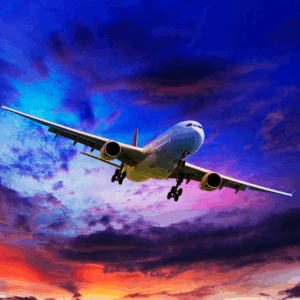
Log in to ExFreight’s online system with your username and password. There, you can select the origin, destination, type of cargo, dimensions, and any additional services you may require. The platform will generate instant quotes, allowing you to book the shipment and track it in real-time. ExFreight offers coverage in over 150 countries for ocean, air, and ground services.
What if I need assistance scheduling a shipment?
ExFreight’s support team is available to help with both technical and logistics-related questions, including customs guidance, insurance, packaging, and route optimization. Additionally, specialized support is offered for API integrations, which is especially useful for logistics operators, 3PLs, and freight forwarders.
The Future Is Hybrid, Data-Driven, and Multimodal
The 2025 trucking recession has served as both a stress test and a catalyst for transformation. Global logistics is no longer a fragmented set of services; it is an integrated, data-driven, and adaptive system. LTL freight offers scalability and control, while air and ocean logistics provide reach and speed. Digital platforms, such as ExFreight, orchestrate these into coherent, resilient networks.
To thrive in this new era, shippers must prioritize transparency, automation, and flexibility. They must rethink transportation logistics department challenges, embrace AI for cost optimization, and anchor their strategy in sustainability. In doing so, logistics moves from being a cost center to a competitive advantage—a force that connects economies, sustains commerce, and shapes the future.


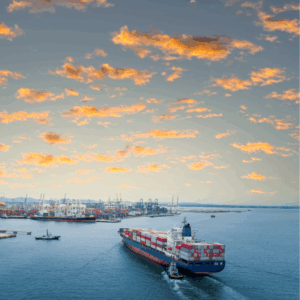

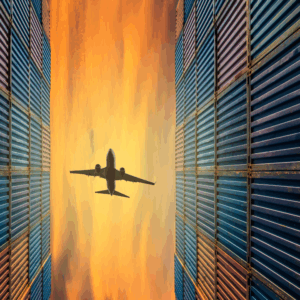

Leave A Comment
You must be logged in to post a comment.